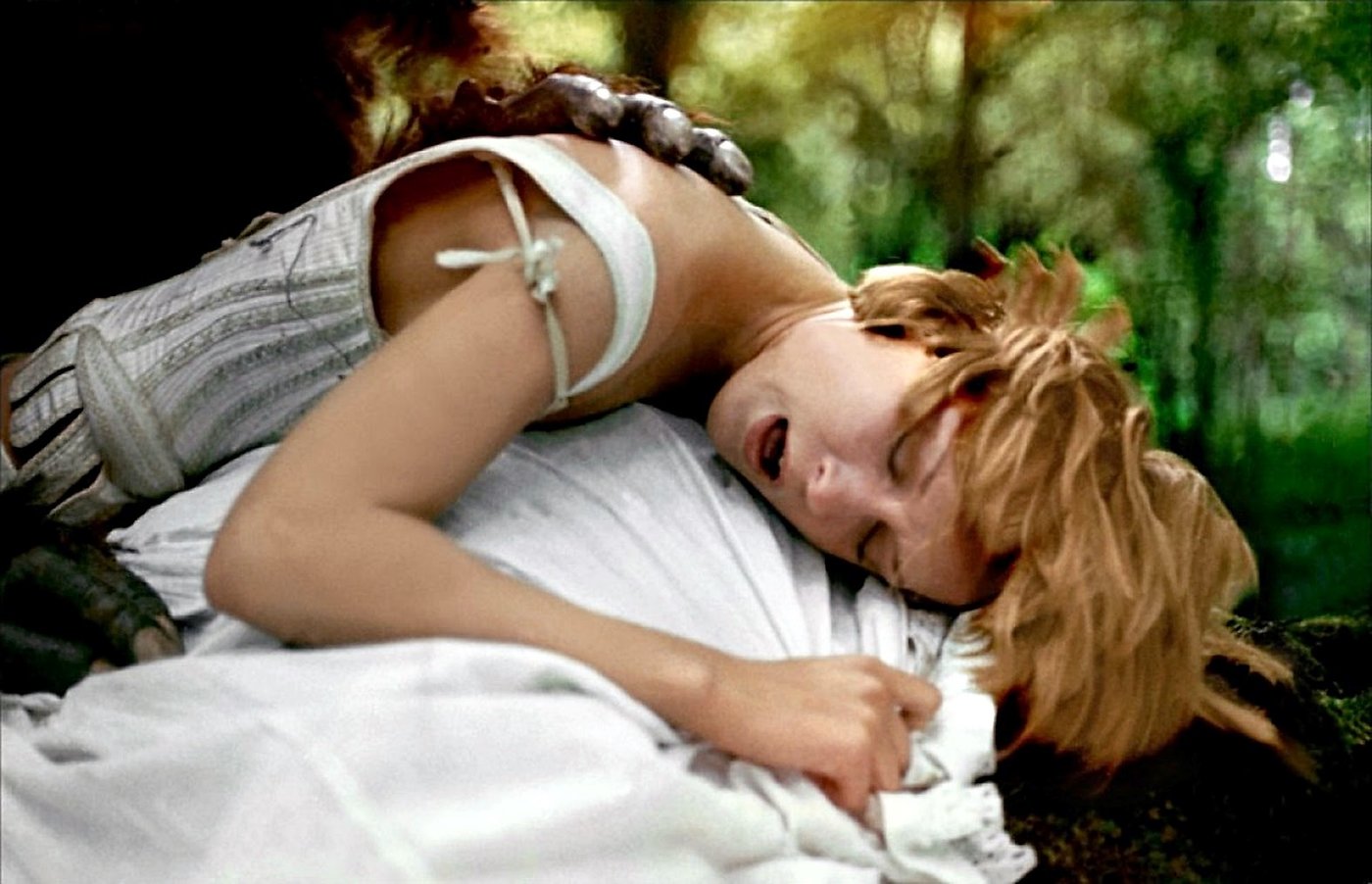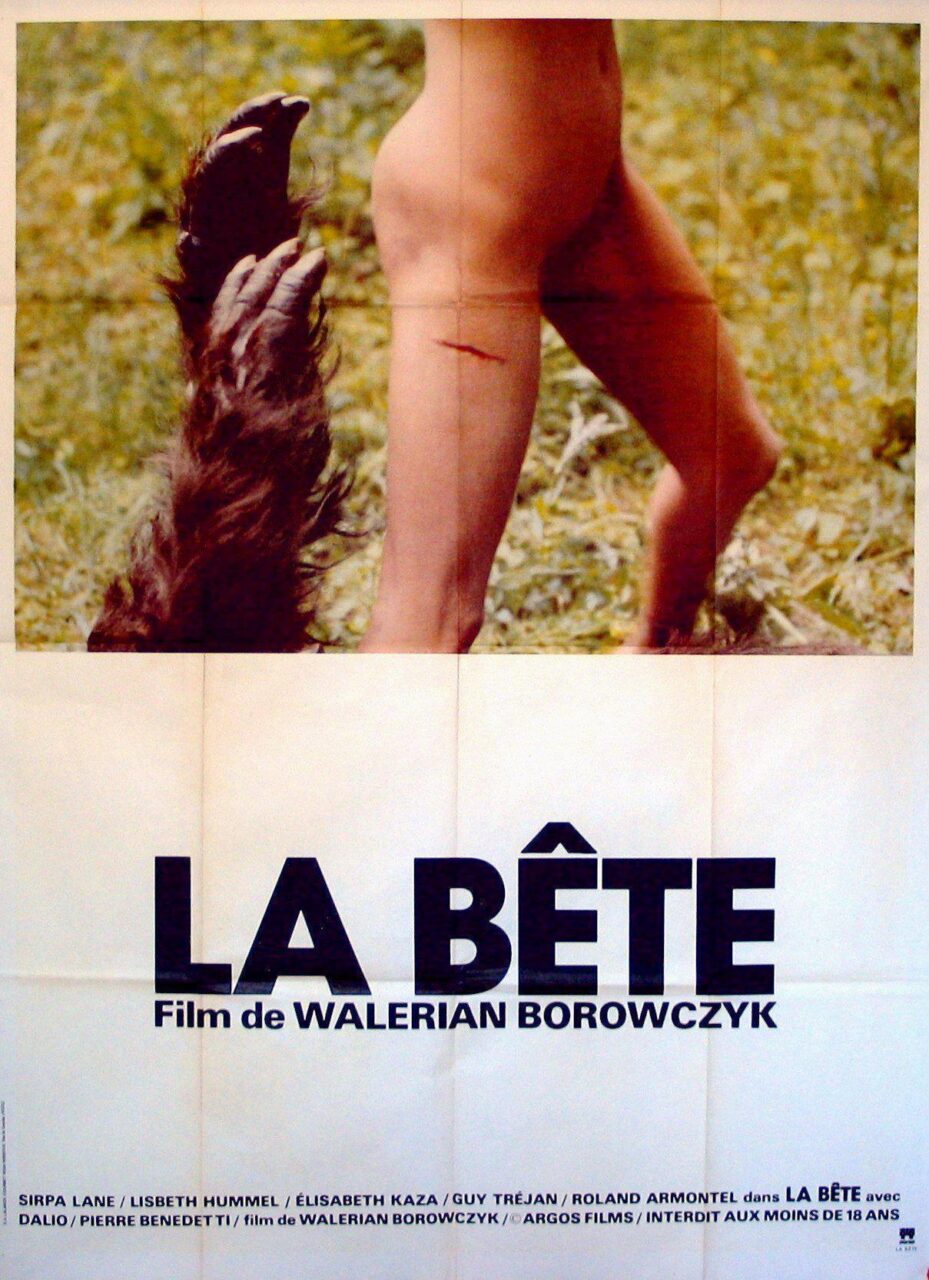(La Bête)
Crew
Director/Screenplay – Walerian Borowczyk, Producer – Anatole Dauman, Photography – Bernard Daillencourt & Marcel Grignon, Music – Domenico Scarlatti, Production Design – Jacques D’Ovido. Production Company – Argus Films.
Cast
Lisbeth Hummel (Lucy Broadhurst), Guy Trejan (Pierre, Duc de l’Esperance), Sirpa Lane (Romilda de l’Esperance), Roland Armontel (Bishop), Dalio (Rammendelo de Balo), Pierre Benedetti (Mathurian de l’Esperance), Pascale Rivault (Clarisse de l’Esperance), Elisabeth Kaza (Virginia Broadhurst), Hassane Fall (Ifany)
Plot
English girl Lucy Broadhurst arrives in France at the estate of The Duc de l’Esperance with the intention of marrying his son Mathurin with whom she has been corresponding. The Duc desperately tries to get his father to contact his brother, a cardinal at the Vatican, in order to bless the strange Mathurin so that the marriage can go ahead, but the cardinal will not return his calls. As Lucy lies down to sleep, she has an erotic dream of how the Duc’s ancestor Romilda was raped and sensually ravaged by a beast.
Walerian Borowcyzk was for a brief time one of the most respectable directors of erotica. One struggles to think of any other erotic director whose works received film festival releases, for instance. The Polish-born but French-based Borowczyk emerged with a series of acclaimed (and still unavailable on video) animated short films in the 1960s, but it was his erotica that gained Borowcyzk critical semi-respectability. Borowczyk became a live-action director with erotic films such as Goto, Island of Love (1968), Blanche (1971), Immoral Tales (1974), The Story of a Sin (1975), The Streetwalker (1976), Behind Convent Walls (1977), Lulu (1980), Dr Jekyll and His Women (1981) and The Art of Love (1983). His work tapered off beyond the mid-80s amid the likes of the tawdry Emmanuelle V (1987), but there is a small cult that centres around Walerian Borowczyk’s films. Borowczyk’s films were always more than dirty romps – they fell somewhere between the Provencal French comedy and the iconoclasm and thwarted desire of Luis Buñuel around the period of Diary of a Chambermaid (1964) and Belle de Jour (1967).
The Beast began life as an episode of Borowczyk’s erotic anthology Immoral Tales but Borowcyzk expanded the film out on its own after audiences were purportedly outraged by the suggestions of bestiality. The film certainly has the feel of a smaller tale padded out – the beast sequence is not tied to anything else, nor made clear whether it is just Lisbeth Hummel’s sexual fantasy or a flashback to Romilda in the past. The comedic scenes around the panic over the marriage seem drawn out and it is not clear for a long time why it is necessary to have to get the cardinal’s blessing. That said, the surrounding tale – a more gentler Buñuelian tale of pomposity, malarkey among the lower classes and genteel mishap – is delightful. The sequences with servant Hassane Fell and daughter Pascale Rivault’s constantly interrupted lovemaking and her having to satisfy herself on the bedhead are entirely charming.

Borowczyk overtly taps into the inherent sexuality in fairytales like Beauty and the Beast, making the attraction between Beauty and the Beast outrightly sexual, rather than on the level of dreamily Freudian subtext that it seems to swim amidst in films like King Kong (1933). When we arrive at the erotic dream, the genteel comedy of the earlier sequences soon segues into something remarkable. We soon even forget about the unconvincing looking Beast. The sequence writhes with amazing images – Sirpa Lane fleeing through the woods from the Beast, he eating her out as she hangs from a tree, ravishing her in half-torn clothes, she repeatedly causing his gigantic knobbed black forearm-sized penis to ooze with semen and then smearing it all over herself, all intercut with scenes of Lisbeth Hummel crushing the petals of the rose that Mathurin sent her into her vagina as she masturbates. The dreamy lyricism of the sequence is extraordinary.
The atmosphere is made all the more dream-like by the lush decor that Borowczyk lavishes on the film – marvellously antiquarian devices like books of pressed leaves, period drawings, portmanteaus, corsets preserved in cabinets and some exquisitely decadent imagery like the torn corset floating in the lake and snails crawling through discarded shoes amid the woodland scenery.


